All you need to know about whale watching in Quebec
Few places in the world offer the opportunity of seeing whales roaming freely in the waters like the Saint-Lawrence river in Quebec. If in luck, you will be able to see many whales and of many different species! On our first dedicated whale watching trip in Quebec (hopefully, one of many to come) we saw up close to 60 whales! You should have seen me on the kayak, I was like a little girl full of excitement with big eyes not knowing where to look, screaming here is one, here is another!
It's the anticipation, the surprise and the awe of seeing wild animals thrive in their natural habitat, that make wildlife observation so thrilling. In this article, I will tell you all about Whale watching in Quebec - and how to do it right!
The province has several places to observe the largest animals in the world. After all, there is a scenic route called the Whale Route dedicated to spotting these magnificent creatures.
Whichever place you decide to visit in your marine safari, remember to be mindful of the animals and their habitat. Also, don’t forget to visit the gorgeous places on land. You will come here for the whales, but you will fall in love with the scenery, the food and the locals.
Photo by Alexandre Brondino on Unsplash
Get to know the whales
Before getting into where to watch them, let's dig into some whale-savvy information. Because to fully appreciate the whales you will need to understand a little bit about their behaviour and why they come to Quebec. This will also help you spot the majestic Saint-Lawrence River.
What types of whales will you be admiring?
There are 80 species of whales swimming in the world’s seas and oceans. The Saint-Lawrence waters have 13 species of whales. There are 8 Toothed whales and 5 Baleen whales (the ones that have brushes as teeth). The whales (and dolphins) are the Atlantic white-sided dolphin, White-beaked dolphin, Long-finned pilot whale, Minke whale, Humpback whale and Fin whale which are the second-largest animals. The Orcas (Killer whales) and Northern bottlenose whales are extremely rare to observe in this area. The Beluga whale, North Atlantic right whale and Blue whale are on the list of endangered species so if you see them, consider yourself extremely lucky as, sadly, there are only a handful left of individuals.
Did you know that the blue whale is the largest animal on the planet? Even dinosaurs were smaller. Let that sink in!
The ones that you will see the most are the Minke whale and the Humpback whale.
Why do whales like the Saint-Lawrence River?
It is simple, you are in the whale’s Pantry! The Saint Lawrence River is full of krill and small fish due to tides and it is the junction between the Saguenay River, Saguenay Fjord and the gulf. Also, the Saint-Lawrence is on top of an underwater “Grand Canyon” which makes the waters very deep. The whales come here to eat and then migrate south in the fall to reproduce. When the winters are over, the whales come back in the colder temperatures. The Belugas whales are the only full-time residents. Locals can see them year-round!
Understanding the whales
To get the most out of your whale experience, I will suggest forgetting to snap an insta-perfect picture, focusing on spotting them, learning about them and understanding how to protect them. This is more important than your Instagram likes.
Understanding their behaviour will help you know how to spot them. Not all whales breach (get out of the water) and there is a high chance that you will only see a fin or their blow. Seeing the iconic tail (fluke) or snapping a gorgeous photo of a whale jumping out of the water is extremely rare. So, learning to identify the type of fin that you see and how many times they go to the surface to breathe will allow you to decipher which one you spotted. In your boat tour, kayak or from the different observation points inland, you will have a marine biologist helping you with this. By the end of your trip, you will know all about these little tips!
It is important to point out that some animals are in extreme danger of extinction. For example, the belugas are primarily an arctic species, they are mostly in the Canadian North, around Churchill, Manitoba. The ones found in the St. Lawrence Estuary are an isolated group that has a few genetic problems and they have been having a population decrease, especially during the extreme fisheries that happened in the area during the beginning of the 20th century. The belugas are a playful punch and they are curious animals. Therefore, it is important to keep their distance from them, so they don’t interact with humans.
Humpback whales, on the other hand, are having a slow increase in their numbers. This shows that all the work invested in whale conservation has its fruits! Siam, the humpback whale has been spotted since the 80s’. Did you know that life expectancy is estimated to be 80 years?
The Marine Mammal Interpretation Centre is a must-stop to understand more about the whales. The museum has real whales’ bones and it will strike you how big these animals are. While you will hear that they measure 6 meters but seeing the bones will put things into perspective. The displays are in French (to get the English version you will have to ask for it at the front desk), but the guides are bilingual and always there to help you. The guides are Naturalists from the Group for Research and Education on Marine Mammals (GREMM). Don’t forget to go to the boutique, all the profits made from the sale of their products go towards whale conservation. (I bought a cute beluga T-shirt). There are other interpretation centers: the Mingan Island Cetacean Study in Longue-Pointe-de-Mingan and Exploramer in Sainte-Anne-des-Monts.
To protect the whales the Canadian and the Quebec government have created the Saguenay–St. Lawrence Marine Park. Here, the speed of the boats and their distance from the whales is regulated. To learn more about the marine park or the whales you can head to the Cap-de-Bon-Désir Interpretation and Observation Centre & Marine Environment Discovery Centre.
If you are looking to broaden your knowledge of these gentle giants, I will suggest going to Reseau d’Observation de mammifères marin and to Baleine en direct, they even track whales and you can plan your next stop depending on where they are.
A beluga, one of the 13 especies found in Quebec. Photo by Mendar Bouchali on Unsplash
When to go Whale watching in Quebec?
The best time to go whale watching in Quebec is from Spring to fall. Most of the whales come to the region to eat from May to November, then they migrate south to reproduce. The whales come to the region to feast as they don’t eat in the south. Whales love the colder temperatures so they are most active around September or October. We went to Tadoussac during the first week of September and we had a lovely time. We saw up to 60 whales! We also went further in the Cote Nord, we went to the Mingan Archipelago at the beginning of July and we saw fewer whales.
Depending on which whale you want to see, you will have to adjust your vacation. Some come as early as May, some come in August. I will leave it up to you to check what species of whale you want to see and plan accordingly.
Where to Whale watching in Quebec?
Now, let's get into the fun stuff, where to do your whale-watching adventure in Quebec? You can see them along both shores of the Saint-Lawrence River, Cote-Nord and the Bas-St-Laurent and Gaspésie. Be prepared to be amazed by the wonders of Quebec by the sea region.
Tadoussac
Tadoussac and its surroundings are THE spot where to see them. This is the best place to see them, period. You can learn all about this charming town, by going to my dedicated article.
Can you see the whales from the shore? Of course, you can!
The town of Tadoussac has 2 viewpoints. Pointe-de-l’Islet trail which is right at Tadoussac's marina and Marine Mammal Interpretation Centre (CIMM) offers a great viewpoint of the Saguenay Fjord.
Parc National du Fjord-du-Saguenay is popular for its “Beluga nursery”. Beluga moms like to go to the Baie-Sainte-Marguerite with their babies. It offers tranquil water with little disruption and plenty of food. To see them, you will need to do an easy hike of 6 km to La Halte du Béluga. From here, sit on a rock and wait to be amazed.
Parks Canada has 3 land places in the Saguenay–St. Lawrence Marine Park: Cap-de-Bon-Désir, Pointe Noire Interpretation and Observation Centre and Marine Environment Discovery Centre. At these 3 stops, you have marine biologists and naturalist guides who are there for you to ask questions and to do activities. I HIGHLY suggest going to see them, you will learn so much about marine life. We were lucky to chat with them and ask our burning questions about whale preservation and their behaviour. Do you remember the whale that came to Montreal during the pandemic? I had tons of questions about it and they answered them all!
If you are in a rush, you can take a whale-watching cruise from Québec City, it will last a whole day trip. This type of tour also involves a bus ride. However, I will suggest visiting beyond Montreal and Quebec City, the province has so much more to offer! Check my travel guide for planning road trips to the best places in the province. Remember that Quebec is a HUGE province and the distances are long. You will need to plan your travel carefully. So rent a car and get ready to embark on an epic road trip that will take you from Montreal to the UNESCO World Heritage city of Quebec to a remote option up in Côte-Nord.
The whale route
Yes, there is a scenic route dedicated to admiring these beautiful creatures! You can read all about this trip here.
The whale route is in the Côte Nord which goes from Tadoussac to Kegaska. It follows Route 138 bordering the St. Lawrence River for 1250 kilometres. Here, you will be able to stop at small fishing towns, lighthouses, unique rivers and forests. The main stops are Tadoussac, Baie-Comeau, Sept-Îles, Havre-Saint-Pierre, the Mingan Archipelago National Park Reserve and Kegaska. Since Route 138 borders the river, you might even have a chance to see whales from the car, so don’t fall asleep!
You can take guided whale-watching excursions in the Saguenay–St. Lawrence Marine Park, Sept Îles Archipelago or Mingan Archipelago. The route also has Several interpretation sites. To know all the stops along this route, click here. The Mingan Archipelago National Park Reserve is worth all the hours of driving, trust me! You can read more about it in my Cote Nord article.
If playing in the water is not for you, you could still see the whales from shore. On our Cote Nord trip, we saw whales in Longue-Pointe-de-Mingan having our breakfast while watching the whales is an experience on its own!
The other place where we saw whales was at the hidden beach of Cap Ferré. Sit by the beach, have a picnic and admire the whales, we saw around 5 whales. from here, you can take a short hike to the Red Stream.
Gaspésie and Bas-Saint-Laurent
While the whale route might get all the praise, Gaspésie & Bas-Saint-Laurent also have several places to see the whales and to take guided excursions. This region is right on the other side of the river.
The first stop is Rivière-du-Loup, this is where the river widens into the sea. From here you can take a tour operator into the Marine Park. or you can go to the different islands. If you are in luck, maybe you will see some in the Parc National du Bic, but here, the spotlight is on the harbour seals!
One of my favourite spots in the area is l'Île Verte. Notre-Dame-des-Sept-Douleurs (known as Île Verte) is a heavenly island in the Lower St. Lawrence region. This tiny island of around 15km long is only accessible by ferry during the summertime. The island has an idyllic landscape, with one of the most beautiful sunsets I have ever seen! This untouched rugged island has Québec’s oldest lighthouse. The day we arrived, there was a whale near the lighthouse with the pink sunset in the backdrop. This is something that you can only see in movies.
Let’s move up to Gaspésie. In this area, the best spot to see the whales is Forillon National Park, located at the easternmost tip of the peninsula. This is one of my favourite national parks in the world. It marks the end of the long Appalachian mountain chain and it is at the easternmost point of the Gaspé Peninsula.
Here you can take whale-watching or sea kayaking excursions departing from Gaspé Bay. In this area, you will most likely find ginormous blue whales and playful humpbacks.
Another possibility to see the whales is in Percé. This is the icon of the region with its gigantic Percé rock dominating the landscape. Here you can take whale-watching tours or you can go to The National Park of Île-Bonaventure-et-du-Rocher-Percé to see 200,000 seabirds, including 110,000 northern gannets. It is the world’s most accessible colony of these birds. On the trajectory to see the island, you might encounter whales too.
You can read all about these 2 regions and how to plan a great road trip in my other article.
How to see the whales?
Now, this is probably the most useful information for you.
There are different ways to see the marine giants. Remember, seeing whales is a luck of the draw, you might see none or you might see several dozens. We were beyond lucky, and we saw close to 60 whales! On the other hand, I know people who only saw one for the duration of their trip. Seeing them depends, in part, on the time of the year you go. Also, keep in mind that these are wild animals who swim freely in open waters. While whales get the well-deserved spotlight, you might see other animals like 3 types of seals, tons of seabirds and more fascinating animals. Here are the different whale watching tour options.
WHALE WATCHING BOAT TOURS
The most popular way of catching a glimpse of the whales is by taking a boat tour. You have different options to choose from. The most popular company is Croisieres AML. They offer different types of boats and packages - choose the one that fits your needs better. There are a total of 24 cruises and excursions to see the whales through the province. You can choose which company depending on the places you will visit.
No tour company can guarantee whale sightings. The tour guides are masters of spotting whale fins, know their behaviour and are in constant communication with other boats so they will do everything in their power for you to see as many whales as possible.
The two main boats are Zodiacs and Larger boats. Both options have pros and cons. Zodiac boats are like speedboats and give you the impression of being closer to the animals. However, you will get WET! Before embarking they will provide you with waterproof jackets and pants at the pier. If you are planning to take pictures, I will suggest a waterproof camera.
Whale-watching cruises are larger and more stable. If you, like me, get seasick, this might be the best option for you. They have outside and inside seating areas, washrooms and food/drink availability. We decided to take this type of whale watching cruise and take the Croisieres AML Grand Fleuve when we were in Tadoussac.
Pro tip: get the option with the gangway. You will be at the top of the boat with 360 views and you will have fewer people. This option is a little more expensive, but it is worth the price difference. Trust me on this one!
Both options last around 2h or 3h depending on the season.
KAYAKING IN THE MARINE PARK
This is a MAGICAL experience! When you hear that some memories will last a lifetime, for me, this was one of them!
Kayaking on the St-Laurent will allow you to have a more intimate encounter with whales. Since the Kayaks make less noise, the whales will be less disturbed and possibly come closer.
How close will you see them? We are in a marine park which means that the whales are protected and there are reglementary distances to keep, even in a kayak. You will keep your distance between 100m to 400m, depending on the species. If a whale comes near you, the guide will ask you to distance yourself.
When we kayaked, there was one whale who came really close to us. It circled us and we could clearly see its head and its eye. The whale was curious about what we were, came to say hi and left. During our activity, we saw many minke whales and a beluga pod of around 40 members! It was such a great experience! One of the things that surprised me from this activity is how quiet the river is and the noise that whales and seals make. While you are on the kayak, don’t forget to enjoy the scenery and to look at the waters near you, you might see a medusa or other interesting life forms.
The activity can last half a day or a full day. And before getting into the waters, they will provide you with wetsuits, life vests and basic kayak training. This will last around 1 hour. You will go in a double kayak with a group of 4 others plus the guide. Our guide was great, he was a kayaking pro and knew a lot about marine life.
We did the half-day kayaking tours with Mer et Monde. The tours set off in Les Bergeronnes just a 25-minute drive north of Tadoussac.
I recently found out that Mer et Monde does night trips while kayaking you can observe the phenomenon of bioluminescence and listen to marine mammals with the help of a hydrophone at the same time. It sounds a little scary but this is definitely on my bucket list!
You can also sea kayak in the Mingan Archipelago National Park which gives you access to over 100 kilometres of navigable waters within the 1,000 islands and islets that the park protects.
There are 7 sea kayak companies in the province. You can choose the one based on your location.
How to dress for your epic whale watching in Quebec?
The type of activities and the months visiting our province will dictate what you should wear. However, here are some helpful tips.
Whichever type of embarkation you decide to go on, dress warmly, even in summer. The water is at around 4C and the cold from the water goes up to the boat and there is a lot of wind. I suggest bringing your windbreaker and a scarf.
If you are kayaking, bring the following: swimwear, a synthetic long-sleeve top, a water bottle and sunscreen. The kayak company will give you a wetsuit (with socks) a waterproof windbreaker and a life vest. For after the activity, I will suggest putting something warm as you will get cold and a towel. Also, go for a hot chocolate or coffee after. You can thank me later ;)
Psst: Planning your trip through Quebec province? We’ve got a few other posts you’ll want to take a look at!
Tell me which region are you planning to visit next? And above all, tell me how many whales you had the chance to see!
Do you like the content? Why not help me by buying me a virtual cup of tea?
PIN IT FOR LATER



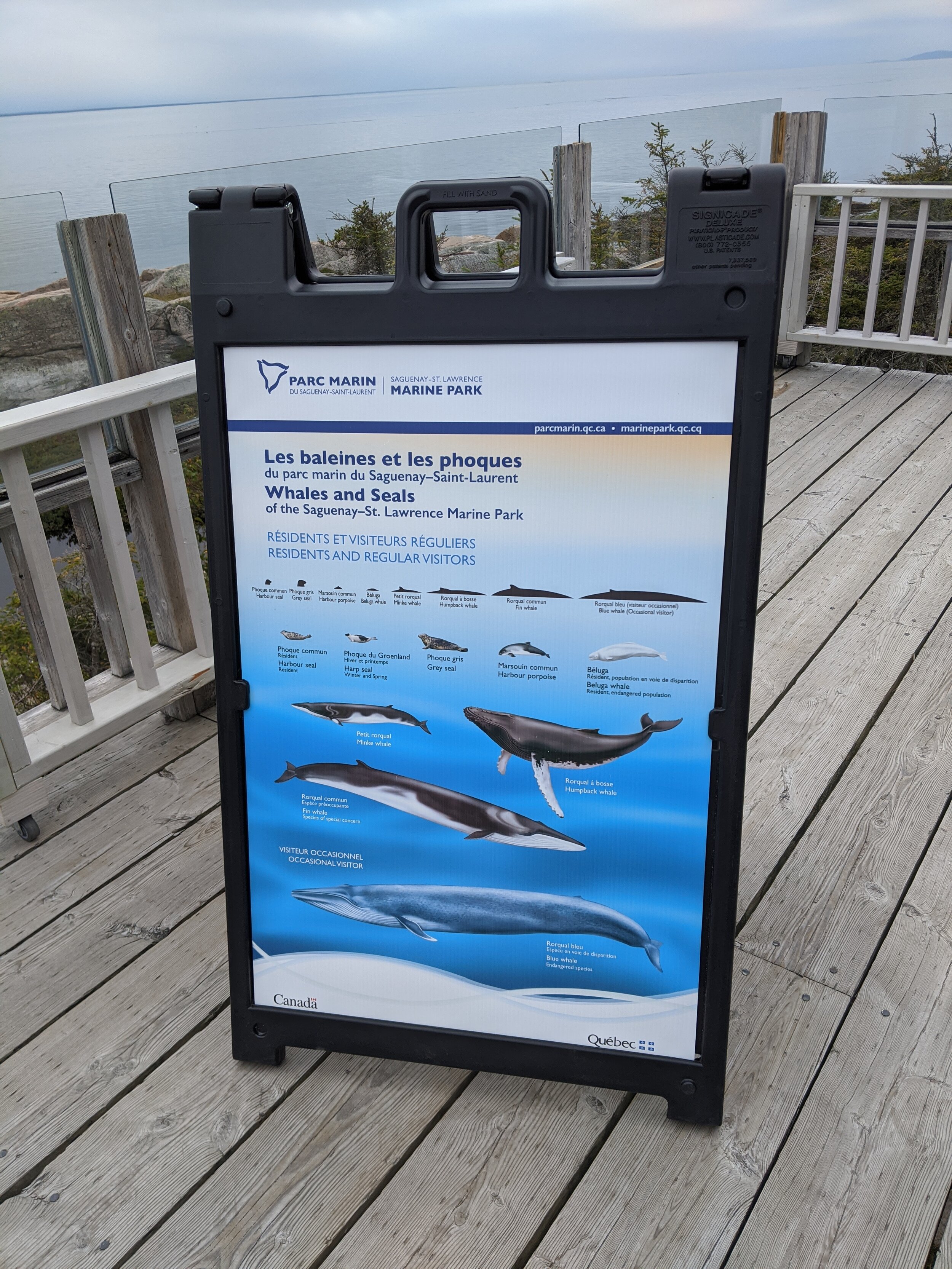
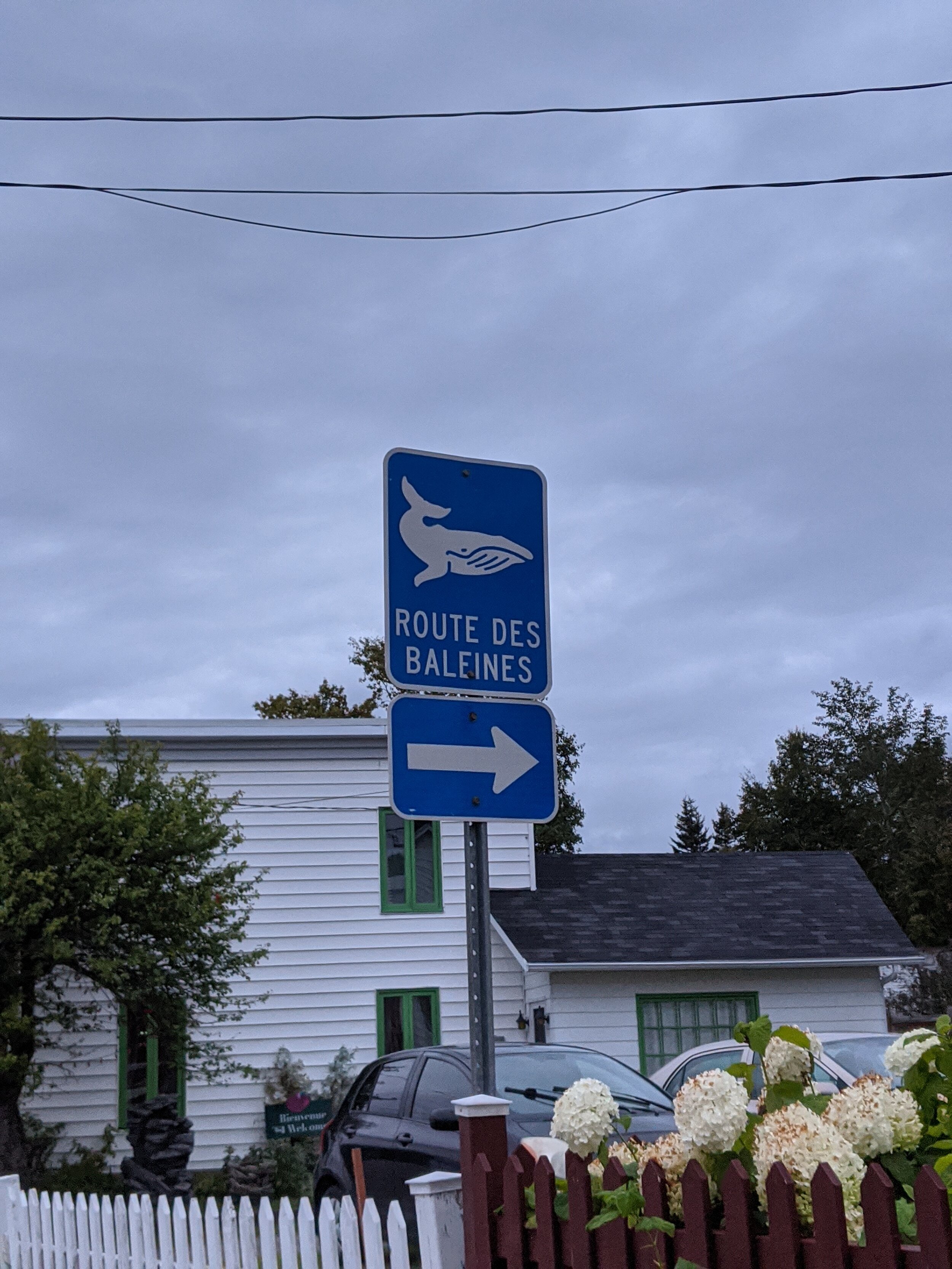

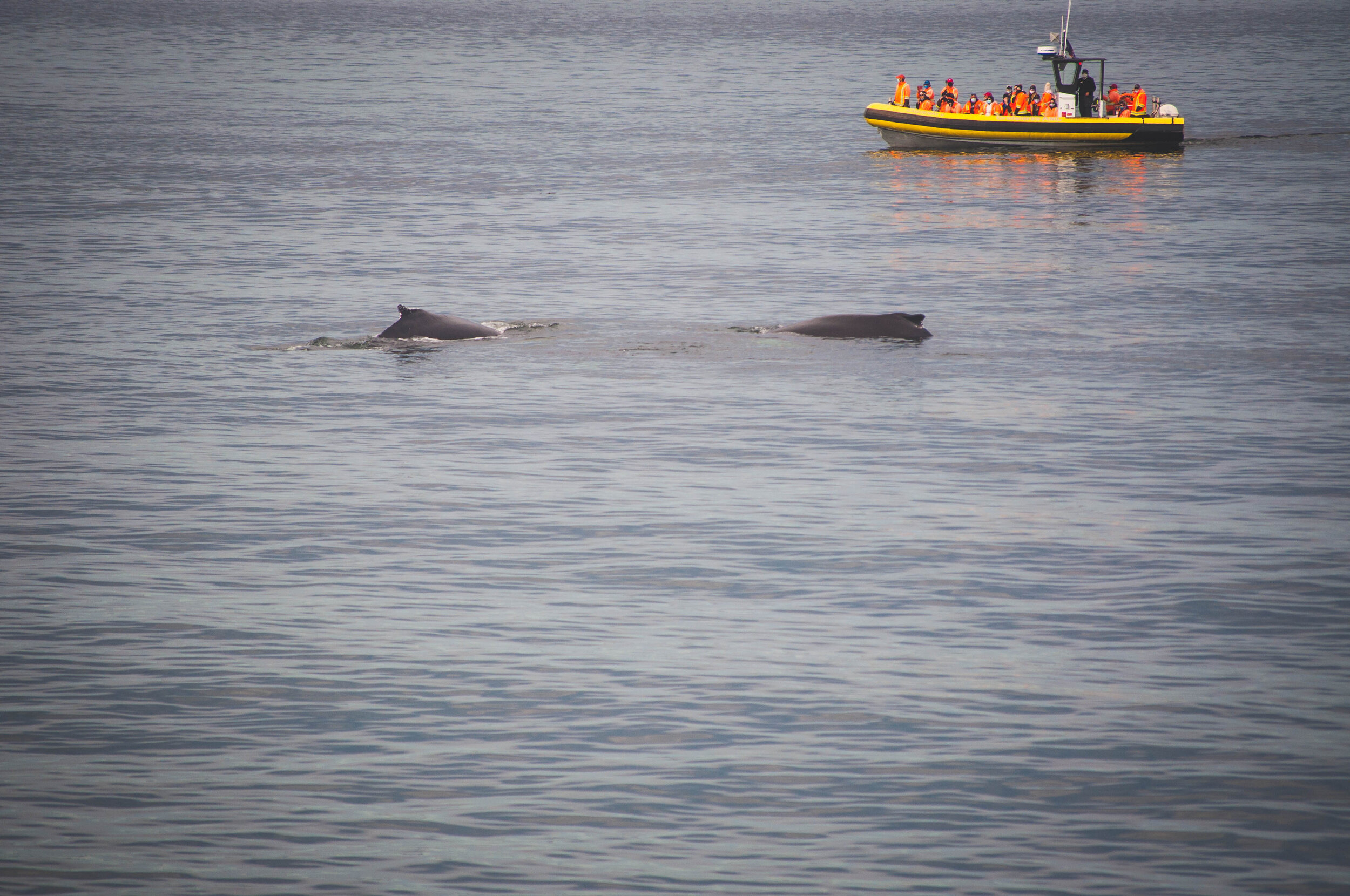
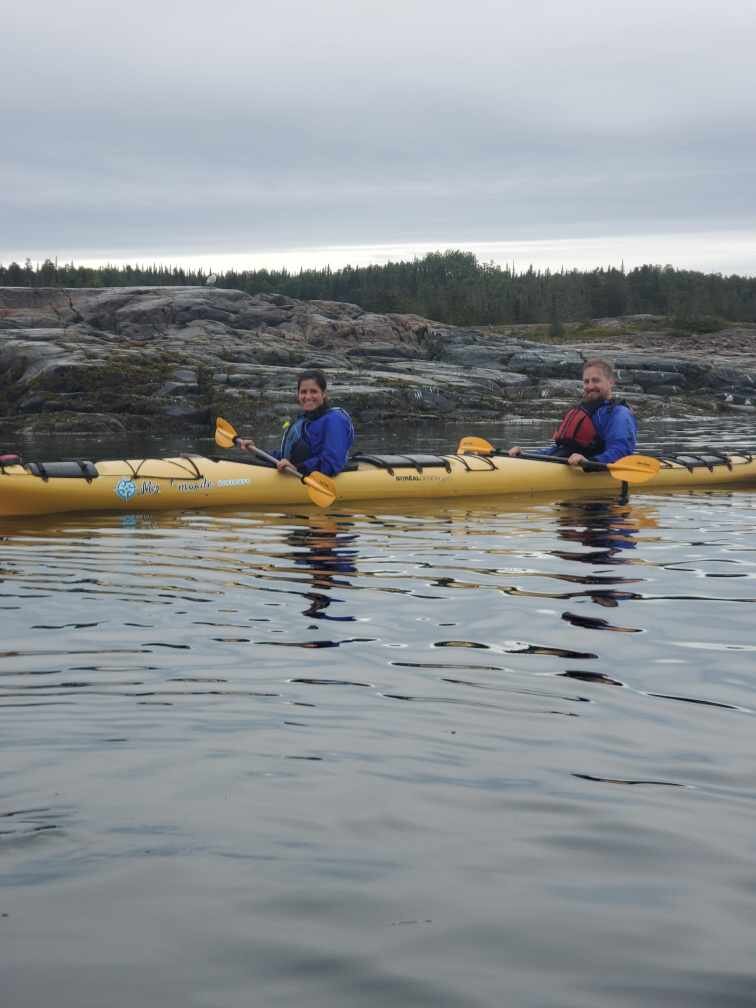







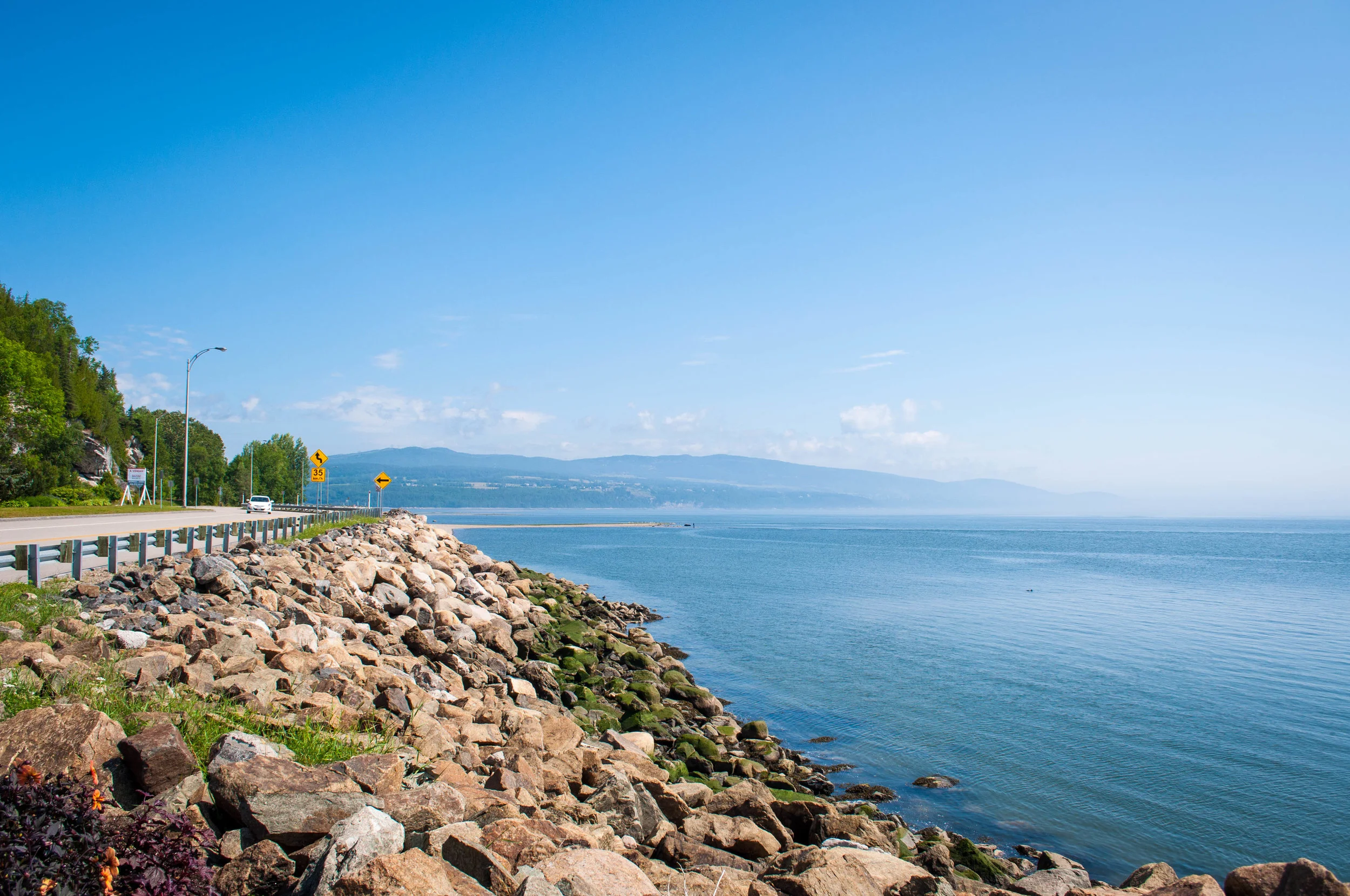


Quebec is a beautiful province with stunning and abundant wildlife. If you have dreamt of seeing bears, whales and hundreds of bird species, then planning a vacation in Quebec will not disappoint you!
In this guide, I will not only tell you where but also the best season to observe the fauna.
So get your camera and your hiking boots ready! We will also highlight sanctuaries and humane zoos along with useful information in the article.